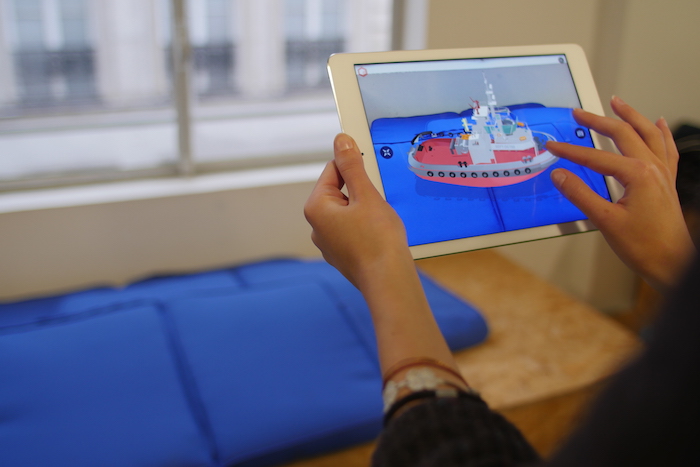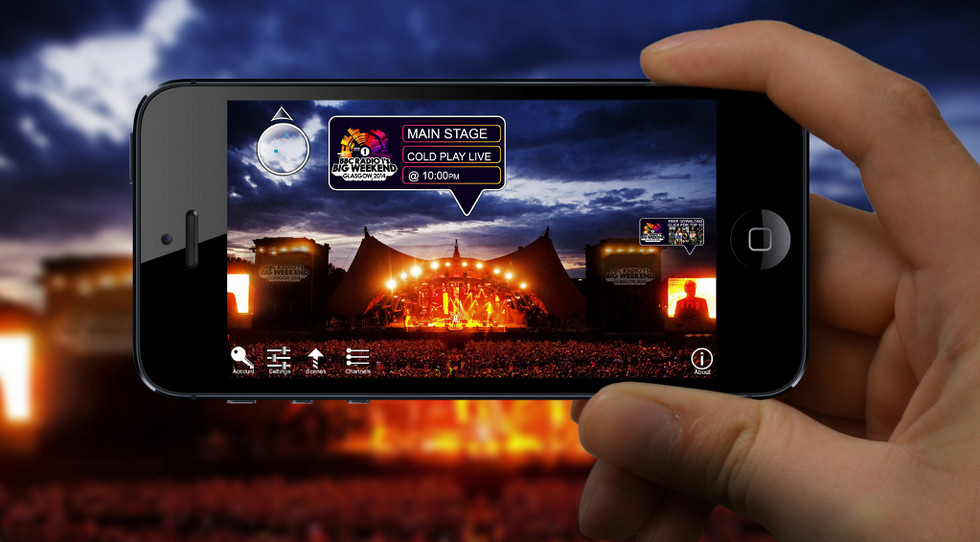Even before the release of Pokémon GO, augmented reality was a term on the tip of everyone’s tongue. AR combines the futuristic flash of virtual reality with a high degree of accessibility, as AR apps are typically based on smartphones rather than dedicated gear.
Augmented reality advertising apps have grown more and more commonplace since 2008, when Wikitude launched their AR Travel Guide. Using relatively primitive first generation Android phones, the app allowed users to view facts, stories, and travel directions by peering through their screens.
In the last two years, dozens of AR apps have been released to varying degrees of success. Since the incredible success of Pokémon GO, everyone knows what AR is, and its use in advertising is becoming ubiquitous.
There has been a gold rush to incorporate the technology into marketing campaigns. Despite that, the technology remains fresh and viable, making a strong impression on users and potential consumers.
Here are 7 of the most creative augmented reality advertising examples of the past two years. Companies hoping to leverage the newfound public awareness of AR would do well to learn from the successes and failures alike.
1. John Lewis Shoots for the Moon
John Lewis, a major department store chain in the UK, has a history of leveraging new technology and actually employs a Head of Brand Innovation. The company’s many cutting-edge advertising campaigns have been the subject of case studies and press stories.
In September 2015, the company made its entry into the augmented reality advertising arena. Partnering with Australian developer Cimagine, the flagship John Lewis store on Oxford Street unveiled an augmented reality showroom in its home furnishings department.
To the naked eye, the showroom is a Spartan, empty space containing little more than a counter. When viewed through the lens of a tablet provided by the store, the room can be transformed into a kitchen, living room, or any other room of the house, and outfitted with items from the entire John Lewis catalog.
By tying the experience to the physical John Lewis store, the app becomes an effective advertisement, bringing potential shoppers to Oxford Street to try out the new technology. While there, they are certain to browse other wares and departments, whether or not they purchase furniture.
2. Augmented Reality Tradeshow Booths with SEFT
The trade show floor is one of the most hyper competitive arenas an advertising team might encounter. Companies of all sizes, scores of innovations, and hundreds of products are tightly packed in a small space, and grabbing the attention of show-goers who are weary of walking the floor is extremely challenging.
The uses of augmented reality in advertising at a trade show are obvious. The technology is adept at making the world a larger place, incorporating digital elements to represent objects and events that may simply not fit on the show floor.
One company making excellent use of AR advertising is SEFT, a manufacturer of boats and ships. At their trade show booths, visitors browse paper brochures, then scan them with an app and walk over to a small model ocean.

Augmented Reality Tradeshow Booths with SEFT
Source: Augment.com
Viewing the ocean through their mobile devices, a scale model of their selected ship appears bobbing on the waves. It’s fun and memorable, and a very effective advertisement.
3. Augmented Reality Signage with Skignz
Startup software development firm Skignz has a unique take on augmented reality ads. The word is pronounced as an amalgam of “sky” and “signs”, and refers to AR announcements and ads placed in the air around the user.
After downloading the app, users’ smartphones notify them of nearby viewable content. By viewing the world through the app, comments and directions magically appear around nearby landmarks, businesses, or of course hanging in the sky.

Augmented Reality Signage with Skignz
Source: Skignz.com
This type of hyper-local targeting is likely the future of augmented reality in advertising. Just as businesses leveraged the Pokémon craze to offer special deals to high-level players, a few strategically placed Skignz leading visitors to a restaurant or coffee shop could be just the thing to boost a local business.
Imagine placing a sign pointing to an ice cream shop right on a public beach on a hot day. Prohibitively expensive or even illegal in the physical world. In the digital realm, it’s easy.
4. How Toys R Us Keeps Kids Engaged
Toy giant Toys R Us (TRU) has been around since 1948, and they have been able to survive so long in the competitive market by staying on top of technology and innovation. Their mascot Geoffrey the Giraffe has been featured in video games, talking toys, and scores of other kids’ tech trends over the decades.
In April 2015, stores in Australia celebrated Easter with a Virtual Easter Egg Hunt, which was actually an impressive feat of augmented reality advertising. Visiting kids used tablets to follow Easter bunnies around the store, looking for digital Easter eggs that were hidden around the store.
Augmented reality allowed TRU to create a large-scale Easter event without committing significant resources to revamping and redecorating the stores. Naturally, the eggs contained offers and coupons for physical toys on sale.
5. Optimizing the Shopping Experience with Dusobox
One of the fiercest battles in advertising takes place every day on store shelves. Product packaging is a combination of art and science, and the techniques used to catch consumers’ eyes evolve as fast as technology.
Packaging developer Dusobox leverages augmented reality to quickly iterate on packaging shapes, sizes, and designs. Using the Augment platform, designers can create new designs and place them on store shelves without involving the factory at all.
The efficiency gains realized through AR have been enormous for Dusobox, as is the increased customer satisfaction. Product makers using Dusobox for packaging design are able to see how their wares will look on store shelves at a fraction of the cost of traditional prototyping.
6. The Horrifying Augmented Reality of The Walking Dead
Although the cinematic qualities of virtual reality are well known, with its ability to transport the user entirely into a fantastical realm, augmented reality is typically a little less dramatic. The hit zombie TV show The Walking Dead broke that trend in 2014 with their advertising campaign in Vienna.
By equipping a tram stop with high-resolution displays and cameras, TV network Sky Austria was able to bring the zombie apocalypse to people waiting for their bus. Commuters sitting inside the stop were shocked when a gory zombie attack appeared to take place just outside the windows of the stop.
In reality, the windows were screens showing a real-time view of the street outside. Using augmented reality, zombies and their victims were digitally added to the feed, creating the illusion that tram riders just might not survive the trip to the office that day.
7. Pepsi Max Making a Splash
In 2014, Pepsi Max used similar technology to create a significantly less scary, but just as impressive, augmented reality installation in London. Commuters waiting at a bus stop were entertained by sights such as a prowling tiger, an alien invasion, and other such spectacles.
Although the show had little to do with Pepsi Max, the soda, it did wonders for Pepsi Max, the brand. While the YouTube video produced showcasing the advertisement has drawn over 7.5 million views, and still sparks active discussion to this day.
The bus stop drew visitors from across the UK once word spread, and gained Pepsi coverage in tech press outlets that would normally ignore the food and beverage space.
The Augmented Reality Advertising Future is Bright
The rise of AR means more than memorable ads and marketing campaigns. Merging the digital and physical worlds also means that traditional digital marketing techniques now have applications in the real world.
For example, one technique used by online marketers is the heat map, which maps out and visualizes where website visitors click. It is incredibly useful to see which elements of a page draw the eye and encourage action, but it has until now been limited to websites alone.
With augmented reality ads, this technique can be applied to the real world. In the case of the Easter Egg Hunt created by Toys R Us, the TRU advertising team could potentially have full visibility into where the kids’ eyes would linger, because they were looking through their tablets.
The technology also allows for fast and nimble iteration and change. AR signs, ads, and other content can be changed and updated remotely and instantly, a far cry from swapping out physical store displays and other more traditional advertising.
All in all, AR is set to be a boon for commerce. As the technology continues to take hold, more and more dramatic applications are continuously appearing. The only sure thing is that advertising will never be the same.
AppReal-VR – Experts in AR
When considering an augmented reality advertising campaign, one of the most critical concerns is that the technology be well-planned and well-executed. Advertising moves fast, and there is no time for fumbling or mistakes when it comes to new technologies.
AppReal-VR is comprised of expert augmented reality developers, marketers, and consultants who have experience in industries ranging from fashion and sports to heavy industry and manufacturing. Under the leadership of CEO Yariv Levski, the firm is expert in creating and deploying augmented reality apps to fit any need and budget.
AppReal-VR utilizes an Agile development methodology to keep clients in the loop throughout the entire creation process. The firm’s goal is always to ensure that its software is created quickly, efficiently, and optimally meets the client’s needs.

 (7 votes, average: 4.43 out of 5)
(7 votes, average: 4.43 out of 5)